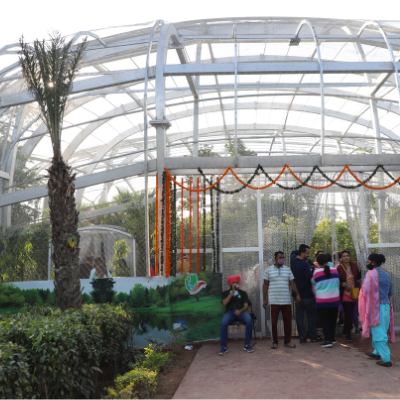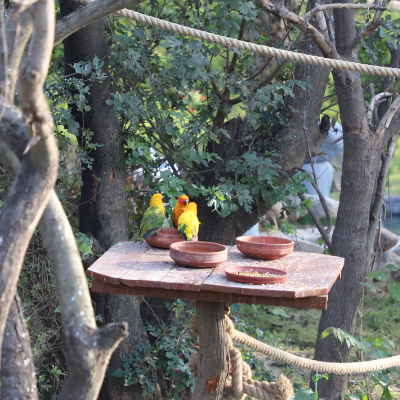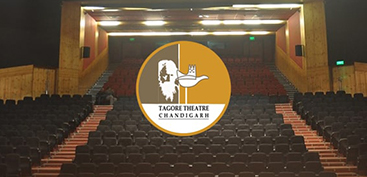Chandigarh witnessed, as Savita Kovind, the First Lady of India, in the presence of Pushpa Devi Purohit, Banwarilal Purohit’s (UT Administrator) wife, inaugurated the Chandigarh Bird Park on 16th November 2021. This initiative can be understood as an extension of the City Bird Wildlife Sanctuary, Chandigarh. It is located at Nagar Van behind the Sukhna Lake and is an initiative of the Department of Forest and Wildlife, UT.
Overview of Bird Park in Chandigarh

Aviary Design and Features: A Glimpse into the Chandigarh Bird Park
This project is very ambitious and aims to spread awareness among the public not just about bird conservation but also the importance of wildlife in Chandigarh in general. The aviaries that have been constructed in Bird Park Chandigarh house some of the most beautiful and exotic birds which are commonly bred in the Indian subcontinent. The enclosure is such that the birds are able to fly around freely just like they would in their natural habitat and can also nest, mate, feed, flourish, and breed without fear and any human intervention. The terrestrial plants, lush greenery, trees, ferns, shrubs, bushes, and several aquatic plants, and creepers in the bird park make for a blissful sight to behold.
According to Debendra Dalai, Chief Conservator of Forests and Chief Wildlife Warden, UT, the entire bird park has been developed spanning an area of over 6.5 acres behind the Sukhna Lake. The aviaries have a 58-foot flying space with close to 200×150 feet of ground area. In total, there are 2 small and 2 walk-through aviaries.

Serenity in Park Design
One thing that you can always give this city massive credit for is the way it designs its gardens and parks in Chandigarh. The Bird Park is no different with its beautifully crafted benches, intricately designed pathways, tracks, and scenic landscape. This bird sanctuary in Chandigarh is being touted as one of the most serene and beautiful places ever to have been planned here. The bird park Chandigarh has already grabbed the title of “Mini Paradise” for bird lovers from the local citizens and visitors.

Exotic Birds that Wow You with Their Beauty at Bird Park Chandigarh
This bird park in Chandigarh boasts of having nearly 550 exotic birds and 48 species within its territory. The surrounding plants and shrubbery that span over acres of land are enough to make the birds feel at home. The entire setup is meant primarily for the conservation, rehabilitation, nutrition, breeding, and management of birds, especially the endangered ones from all across the country. Significant and visible efforts have been made to create and imitate the most ideal habitat for almost all the exotic birds that the Chandigarh Bird Park shelters right now. It is also believed to house the tallest aviary that has ever been made for exotic birds in the country.
Main Attractions of the Bird Park inChandigarh
Apart from providing world-class facilities and close-to-perfect habitats to several species of birds such as the Black Swan, Wood Duck, Finches, Yellow Gold Pheasant, and many more including Macaws, Sun Conures, and African Lovebirds, the bird park in Chandigarh is also equipped with the most modern infrastructure that will facilitate visitors to interact with the birds seamlessly. They will also be able to touch and play around with tamed birds under the supervision of staff members.
Timings of Bird ParkChandigarh:
The Bird Park in Chandigarh will be open for everyone between 10 a.m. to 5 p.m.(times to visit). The bird park is open to everyone from November 17 onwards. For more information regarding time, check out the official website: https://chandigarhforest.gov.in/chandigarh-bird-park-2/
Note- Chandigarh Bird Park, Chandigarh will remain closed every Monday and Tuesday for regular maintenance of park and to give rest to the birds
Ticket Rates:
Entry ticket fee for Bird Park (Adult) (Indian)- Rs. 50/-
Entry ticket fee for Bird Park (Adult) (Foreigner)- Rs. 100/-
Entry ticket fee for Bird Park (Children 5 to 12 years)- Rs. 30/-
Entry ticket fee for Tamed Section (Adult/ Children) (Indian)- Rs. 100/-
Entry ticket fee for Tamed Section (Adult) (Foreigner)- Rs. 500/-
Note: Free entry for school students with accompanying teacher with prior permission from the department on their educational trip.
Create Awareness About Birds- Not Just Fun And Frolic
The Department of Forest and Wildlife of The Chandigarh Union Territory came up with this project (Chandigarh Bird Park) not only to entertain the citizens but to educate them as well. Exotic birds can be found all around the world and more than 10% of their population resides and flourish in India. These birds commonly breed across the Indian subcontinent and the department aims to create awareness among the general people about their habitat and the struggles that they face post-industrialisation, especially in a developing country like India.
Fun Fact: Did you know that the Indian Bird Conservation Network is part of an International Treaty for Conservation and Sustainable Use of Wetlands? This treaty was signed at Ramsar in Iran. India became a part of this treaty in February 1982. Currently, our country has 27 Ramsar sites. The area that is covered by these wetlands is approximately 11,120 sq. km.
Bird Preservation is Our Responsibility
It is our duty to protect rare and endangered species of birds all across the country. You should know that at least 1,317 bird species are present only in the Indian subcontinent alone. You should also be aware that around 10,000 species of birds are found all across the world which means that more than 10% of them belong only to India.
According to an assessment done by the International Union for Conservation of Nature, 100 species of Indian birds fall under the category of “threatened” species. Out of them, 17 are labelled as “critically endangered.” Twenty of them are “endangered” and 63 have been labelled as “vulnerable.” Not just this, but there are several other species that are already scarce in population size and continue to see a decline in their numbers. Our bird population comprises several birds such as raptors, bustards, hornbills, cranes, storks, pheasants, and many more.
It is only through constant education and awareness will we be able to make a difference in their declining numbers. It is essential to make a contribution towards planting trees on a larger scale, rehabilitating mating areas for these birds, preventing illegal encroachment on forest areas, and stopping unauthorised construction of buildings and other structures in reserves or on green belts only meant for wildlife. Together we can help our birds and other wildlife from disappearing into oblivion. Together we can visualise and create an India that is as diverse in her socio-cultural entities and heritage as it is in her natural gifts.










